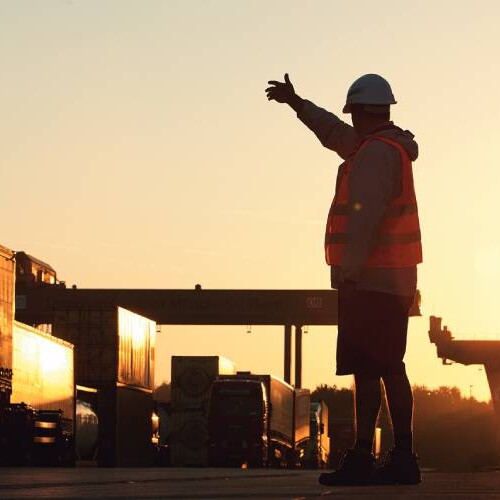

In the constantly changing logistics landscape, intermodal transport is becoming increasingly important and is taking center stage as a pioneering solution - for freight forwarders and the industry. The seamless interaction of truck, rail and ship not only opens up new possibilities for freight forwarders in transport management, but also brings significant advantages. From increased efficiency and cost optimization to environmentally friendly practices. Intermodal transport is full of advantages!
Up to four tons more load weight
Free vehicle and personnel capacities
Reduced investment risk
Reduction of vehicle costs
Exemption from vehicle tax
Toll only for pre- and post-carriage
Compared to through road freight transport, a total weight of 44 tons is permitted before and after the terminals. This corresponds to a weight advantage of 15 percent. A total weight of up to 45 tons or 46 tons is even possible if vehicle combinations are used that are operated with an alternative drive or emission-free technology.
Sending your trucks by rail instead of over long distances by road has a direct impact on your vehicle and personnel capacities. The regional deployment of vehicles around the terminals means that you have more trucks and more drivers available for your transports every day.
In combined transport, your investment risk is considerably lower than in continuous road freight transport. This is because you simply need fewer towing units to move the same quantity of trailers, containers or swap bodies. A smaller fleet also means less tied-up capital.
If you have your loading units transported by rail on the main leg of combined transport, you will reduce your variable and fixed vehicle costs. This is because using your tractor units on the comparatively short road pre- and post-carriage reduces your vehicle costs: less fuel, fewer repairs and less wear and tear on operating resources are the result.
Vehicles can be exempt from vehicle tax as long as they are used exclusively for pre- and onward carriage in combined transport and are marked accordingly.
Tolls only have to be paid for the use of federal highways on the pre- and post-carriage, i.e. the short distances compared to the main route. This results in significantly lower toll charges for your company.
Simplified compliance with the Working Hours Ordinance
Exemptions from driving bans
Rapid availability of cargo space capacities
High level of driver satisfaction
40 times safer than on the road
Since in combined transport the drivers are only deployed on the "short routes" in the pre- and onward carriage and this can be handled extremely flexibly, it is easier to comply with the existing social regulations and thus optimize driver deployment on a daily basis.
Combined transport shipments are partially exempt from driving bans. Under certain conditions, this includes driving bans during vacation periods or on Sundays and public holidays.
You can react more quickly to new transport orders. Simply use your own cranable equipment or hire it quickly. You don't need your own tractor unit just for this job.
Regulated daily working hours not only increase the satisfaction of lorry drivers, but are also a strong competitive advantage when it comes to recruiting employees.
Statistically speaking, transporting goods by rail is 40 times safer than by road. And theft and damage are much less frequent than on the road. Just a few more reasons to transport sensitive hazardous goods or, for example, high-value metals or automotive parts by rail.
Saving and avoiding carbon dioxide
Optimization of the emissions balance of our own vehicle fleet
Optimization of your industrial customer's carbon footprint
Due to the fact that less energy is required per tonne transported by rail, up to 80 percent of climate-damaging carbon dioxide is saved.
You benefit from fewer emissions not only by rail. The carbon footprint of your own fleet is also improved by the regional use of vehicles around the terminals: fewer journeys mean less diesel consumption and therefore ultimately fewer pollutant emissions.
You can score points with your shipper: Up to 80 percent less carbon dioxide by loading road transporters onto environmentally friendly rail means that the carbon footprint of your industrial and commercial shipper is extremely positive.

You can find out how environmentally friendly your transport is at any time with our emissions calculator in the timetable information. With just a few clicks, in no time at all.

In cooperation with DB Cargo, Kombiverkehr's entire German network can be used for transportation without any CO2 emissions. All the electricity for these transports comes from renewable wind and hydroelectric power. More climate protection by rail is not possible.

